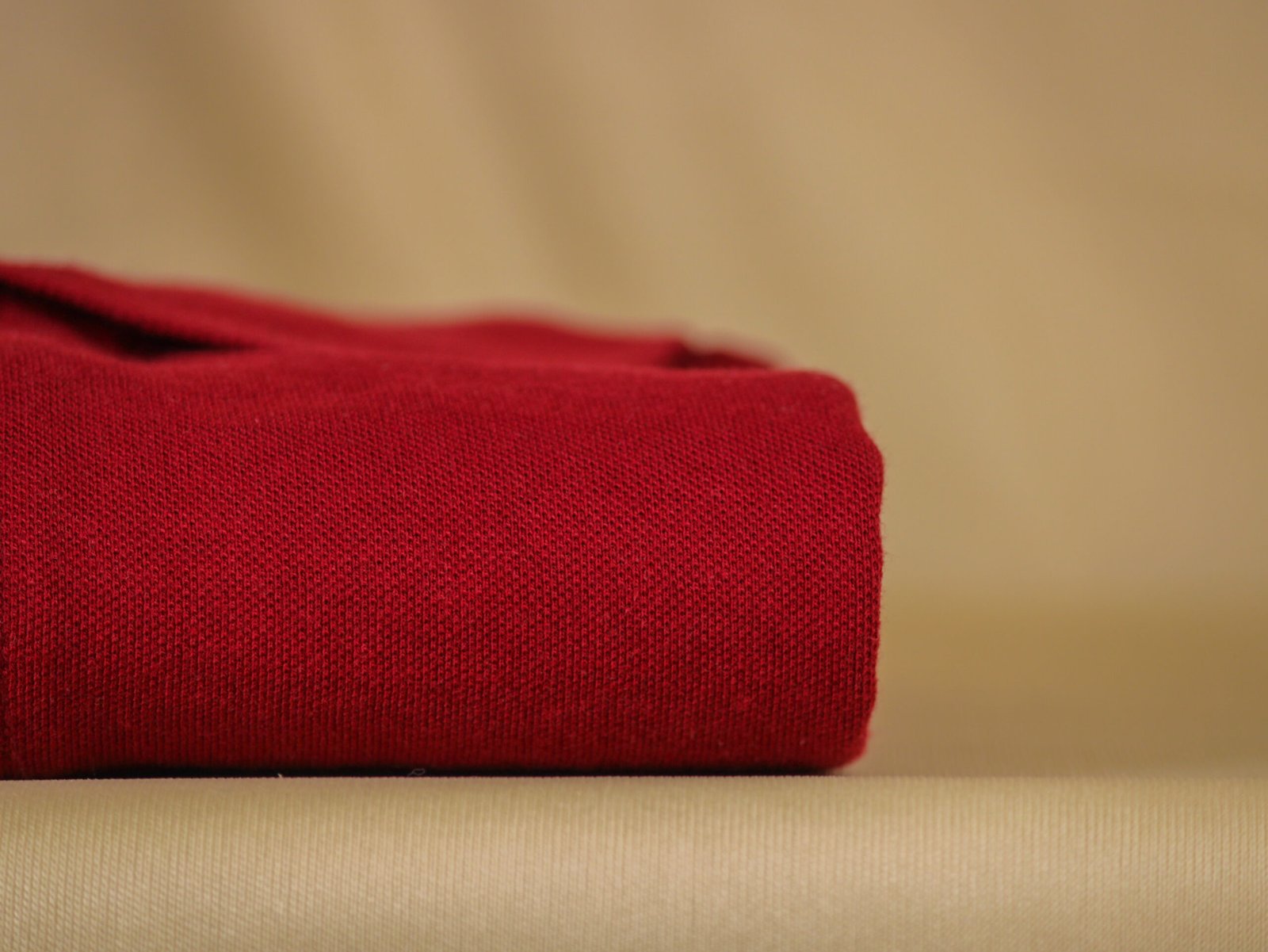FLAT 30% OFF USE CODE: LUX30
Understanding GSM in T-shirts
Choosing the right fabric for your clothing, especially T-shirts, involves understanding GSM, a key factor that impacts comfort, durability, and suitability for different activities and climates. This guide will explain GSM and its significance, providing practical advice for selecting the best GSM for your needs.
What is GSM?
GSM stands for grams per square meter, a standard measurement used to indicate the weight of a fabric. It tells you how dense and thick the fabric is. Higher values mean a denser and thicker fabric, while lower values indicate a lighter and thinner fabric. Understanding it helps you choose the right fabric for the specific purpose, whether it’s a lightweight summer T-shirt or a heavy-duty winter hoodie.


Why Does it Matter What GSM I Use?
The GSM of a fabric significantly influences its weight, thickness, and overall feel. Here’s why GSM is crucial:
- Comfort: The right GSM ensures that the fabric feels comfortable against your skin. Lighter fabrics (lower) are more breathable and suitable for hot weather, while heavier fabrics (higher) provide warmth in cooler climates.
- Durability: Higher GSM fabrics are generally more durable and can withstand frequent washing and wear. This is particularly important for items like hoodies and sweatshirts that are used extensively.
- Purpose: Different activities require different fabric weights. For instance, lightweight fabrics are ideal for activities that involve a lot of movement and sweat, like running and cycling, while heavier fabrics are better for colder environments and less strenuous activities.
Best GSM for Clothes
What GSM is Best for T-shirts?
The ideal GSM for T-shirts typically ranges from 130 to 200:
- 130-150 : These are lightweight T-shirts, perfect for summer. They are breathable and airy, making them ideal for hot weather or indoor activities.
- 160-180 : Mid-weight T-shirts that offer a balance between comfort and durability. Suitable for moderate climates and everyday wear.
- 190-200 : These T-shirts are thicker and provide more warmth, making them suitable for cooler weather or layered outfits.
What GSM is Best for Hoodies/Sweatshirts?
Hoodies and sweatshirts require a higher for added warmth and durability. Here’s a guide:
- 250-300 : Suitable for mild to moderately cool climates. These hoodies are warm but not too heavy.
- 300-400 : Ideal for cold weather, offering significant warmth and durability. These are great for outdoor activities in winter or for those who prefer a heavier feel.
GSM Chart
Here’s a quick reference chart to understand different ranges:
- Lightweight Fabrics: 60-150 (e.g., chiffon, linen, organza, lace)
- Medium Weight Fabrics: 150-300 (e.g., T-shirts, light sweatshirts, velvet)
- Heavyweight Fabrics: 300+ (e.g., hoodies, denim, upholstery fabric)
The Quality of Cotton Matters in Your T-shirt
While GSM is crucial, the quality of the cotton used also plays a significant role in the fabric’s feel and performance. High-quality cotton, such as combed or ring-spun cotton, results in softer and more durable T-shirts. Investing in high-quality cotton ensures that the fabric maintains its comfort and longevity over time.
Advantages and Disadvantages of High GSM
The Benefits of High GSM T-shirts
- Durability: High GSM fabrics are robust and withstand frequent washing and wear, making them ideal for long-term use.
- Warmth: Thicker fabrics provide better insulation, which is essential for colder climates.
- Structure: High GSM fabrics offer more structure, making them suitable for styles that require a firmer shape.
The Disadvantages of High GSM T-shirts
- Weight: Higher GSM fabrics are heavier, which may be uncomfortable in hot climates or during intense physical activities.
- Breathability: Thicker fabrics may be less breathable, leading to discomfort during warm weather or high-intensity activities.
What Happens When You Use Very Low GSM in T-shirts?
Using very low GSM fabrics (below 100) results in lightweight, airy T-shirts. While these can be comfortable for hot weather, they lack durability and structure. They are best suited for disposable or promotional items not intended for long-term use.
Best GSM for Specific Activities
Walking & Hiking
For walking or hiking, the best depends on the climate and intensity of the activity:
- Cool Climate: Opt for mid-weight fabrics (150-200) that provide warmth and durability.
- Warm Climate: Choose lightweight fabrics (100-150) for breathability and comfort.
Mountaineering
Mountaineering requires a balance of warmth and weight:
- 200-250 : This range provides sufficient warmth without being too heavy, allowing for layering to adjust to varying temperatures.
Skiing
Skiing demands warm, durable fabrics:
- 200-250 : Ideal for providing warmth and flexibility. Layering is essential to manage temperature changes and protect against the cold.
Cycling
Cycling generates significant body heat, so lightweight, breathable fabrics are crucial:
- 100-150 : Fabrics in this range are light and moisture-wicking, keeping you dry and comfortable during intense activity.
Running
Running, similar to cycling, requires breathable, lightweight fabrics:
- 100-150 : This range ensures maximum performance and comfort, preventing overheating.
How to Care for Your T-shirt?
Proper care extends the life of your T-shirt:
- Washing: Use cold water and gentle detergents to prevent fabric damage. Avoid using bleach or harsh chemicals.
- Drying: Air dry when possible to maintain the fabric’s integrity and prevent shrinkage. If using a dryer, choose a low heat setting.
- Ironing: Use a low heat setting and avoid ironing directly over prints or embellishments to prevent damage.
- Storage: Store T-shirts in a cool, dry place. Folding them instead of hanging can help maintain their shape and prevent stretching.
By understanding GSM and its implications, you can make informed decisions when purchasing T-shirts and other clothing items, ensuring optimal comfort, performance, and durability. Selecting the right GSM for your specific needs enhances your overall experience and satisfaction with your wardrobe choices.
